Say for example, I have a Numpy 2D array (7 rows, 7 columns) filled with zeros:
my_ array = numpy.zeros((7, 7))
Then for sake of argument say that I want to select the element in the middle and set its value to 1:
my_array[3,3] = 1
Now say that I have been given a Manhattan distance of 3, how do I subset my array to only select the elements that are less than or equal to the Manhattan distance (from the middle element) and set those elements to 1? The end result should be:

I could iterate through each element in the the 2D array but do not want to do this as this is too expensive, especially if my matrix is very large and the Manhattan distance is very small (for example 70x70 matrix with Manhattan distance of 10).
